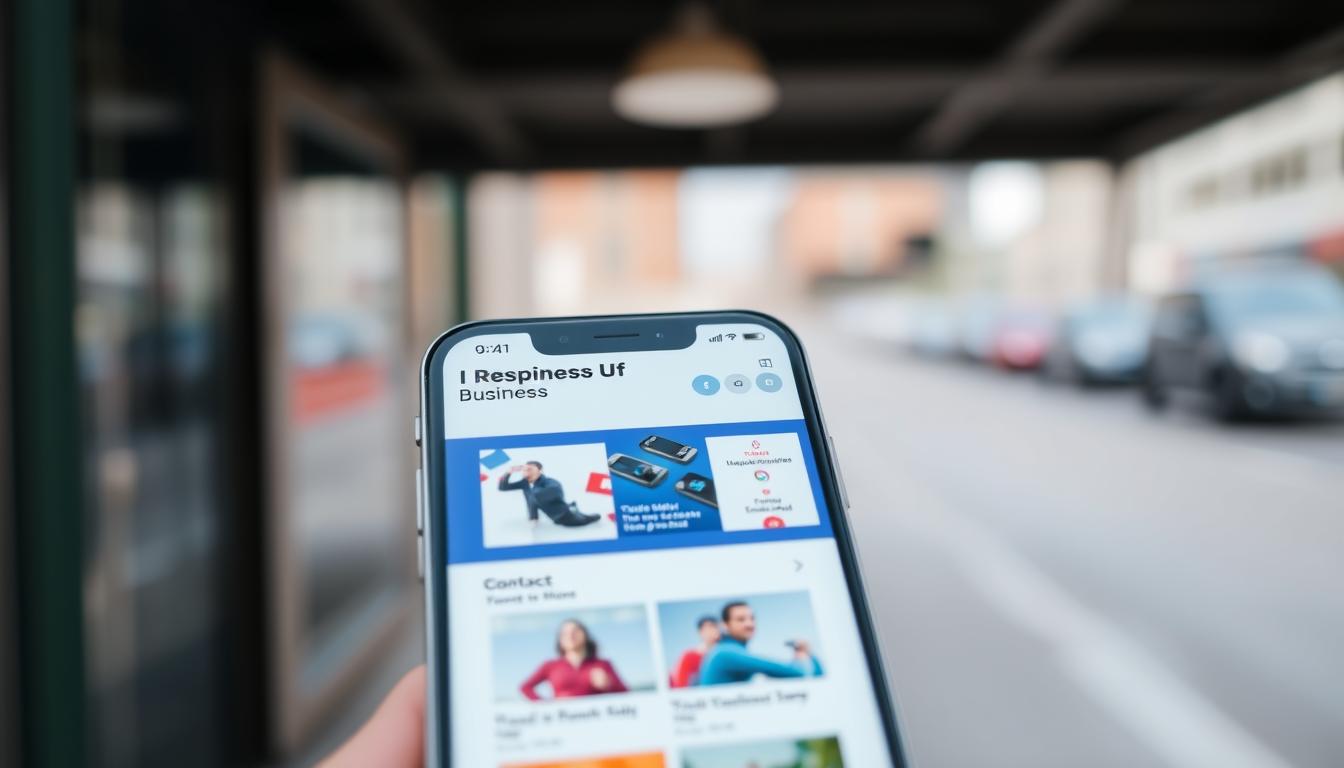In today’s digital landscape, ensuring your business website is mobile-friendly isn’t just a trend—it’s a necessity. With mobile devices accounting for over 50% of all web traffic globally, the importance of mobile optimization has never been clearer. A responsive design is crucial for enhancing user engagement and satisfaction. According to research by Google, 61% of users are unlikely to return to a site on mobile if they faced difficulties accessing it the first time. Therefore, understanding the business website importance of a mobile-friendly experience can significantly impact your success.
The Rise of Mobile Internet Usage
Mobile internet usage is experiencing remarkable growth, reshaping how users engage with online content. As mobile devices become increasingly integral to daily life, understanding the associated trends is essential for businesses aiming to capture a wider audience.
Statistics Highlighting Mobile Usage Growth
Recent mobile internet statistics reveal a substantial shift in mobile device usage. In 2022, mobile devices accounted for approximately 55% of all web traffic, with this trend showing no signs of slowing down. The growth of mobile browsing continues to soar, compelling companies to enhance their online presence tailored to mobile users. For instance, studies indicate that over 70% of internet users prefer browsing on their phones instead of desktop systems, emphasizing the importance of responsive design.
Shifts in Consumer Behavior Towards Mobile Devices
Current mobile trends highlight a transformation in consumer behavior mobile trends, with smartphones now serving multiple purposes beyond simple communication. A surge in mobile shopping behavior is notable, as mobile commerce is projected to reach a staggering $3.5 trillion by 2025. Furthermore, over 80% of users consult their mobile devices while in-store to research products, showcasing the increasing reliance on mobile browsing habits. This pivot signifies a critical expectation among consumers: seamless online experiences across platforms. Businesses that do not adapt to these behaviors risk losing potential customers.
| Year | Mobile Device Usage (%) | Mobile Commerce Value ($ Trillion) |
|---|---|---|
| 2022 | 55% | $2.9 Trillion |
| 2023 | 60% | $3.1 Trillion |
| 2025 | 70% | $3.5 Trillion |
Is Your Business Website Mobile-Friendly? 3 Reasons Why It’s So Important
In an increasingly mobile-oriented world, businesses must recognize the importance of optimizing their websites for mobile devices. Enhancing user experience mobile through mobile-friendly designs is crucial for attracting and retaining customers. Below are three essential reasons why a mobile-optimized website can lead to significant benefits for businesses.
Enhanced User Experience and Engagement
A mobile-friendly site makes it easier for users to navigate without needing to zoom in or deal with lag. Prioritizing user experience mobile translates to higher mobile engagement. Visitors appreciate intuitive designs that cater to their browsing preferences, directly impacting their interaction with the site. Research shows that responsive design benefits extend beyond aesthetics. A streamlined site can retain attention better, encouraging users to explore products or services further.
Improved Search Engine Rankings
Mobile SEO is critical for online visibility, especially with Google mobile-first indexing. This approach means the mobile version of a site is the primary one considered by Google when determining search engine rankings. A website that is not mobile-friendly risks being buried in search results. Optimizing for mobile can significantly enhance visibility, drawing organic traffic from users searching for services or products on their devices. Businesses aiming to stand out in search results must embrace responsive design to ensure a competitive edge.
Increased Conversion Rates and Sales
Conversion rates mobile show a strong correlation with how well a site is optimized for mobile users. Research indicates that a poorly designed mobile site discourages nearly 57% of users from recommending the business. Conversely, mobile-friendly sites foster a smoother checkout process, directly leading to sales growth mobile-friendly sites can achieve. When users find it easy to make purchases on their mobile devices, they are more likely to become repeat customers, boosting overall revenue and loyalty.

| Factors | Mobile-Friendly Site | Non-Mobile-Friendly Site |
|---|---|---|
| User Experience | Optimized for navigation and speed | Challenging to navigate, slow to load |
| Search Engine Rankings | Higher visibility in search results | Lower rankings, reduced traffic |
| Conversion Rates | Higher completion of purchases | Increased abandonment rates |
Steps to Ensure Your Website is Mobile-Friendly
To create a mobile-friendly website, the first of the mobile optimization steps involves adopting responsive web design. This technique allows your website to adjust seamlessly to different screen sizes, ensuring a consistent and functional experience for users across devices. By utilizing responsive web design best practices, you’ll provide visitors with a site that looks great on smartphones and tablets, ultimately improving their overall experience.
Another critical element is optimizing your website’s loading speeds. Research indicates that 53% of mobile users will leave a site if it takes longer than three seconds to load. To avoid losing potential customers, consider compressing images and minimizing the use of heavy scripts. Implementing these mobile-friendly website tips can significantly enhance your site’s performance and keep users engaged.
Lastly, ensure that navigation is clear and easy to use on mobile devices. A well-structured menu and straightforward call-to-action buttons can enhance usability, making it easier for visitors to find what they’re looking for. With these strategic steps, your business can foster a mobile-friendly environment that not only improves user experience but also drives higher conversion rates.


No Responses